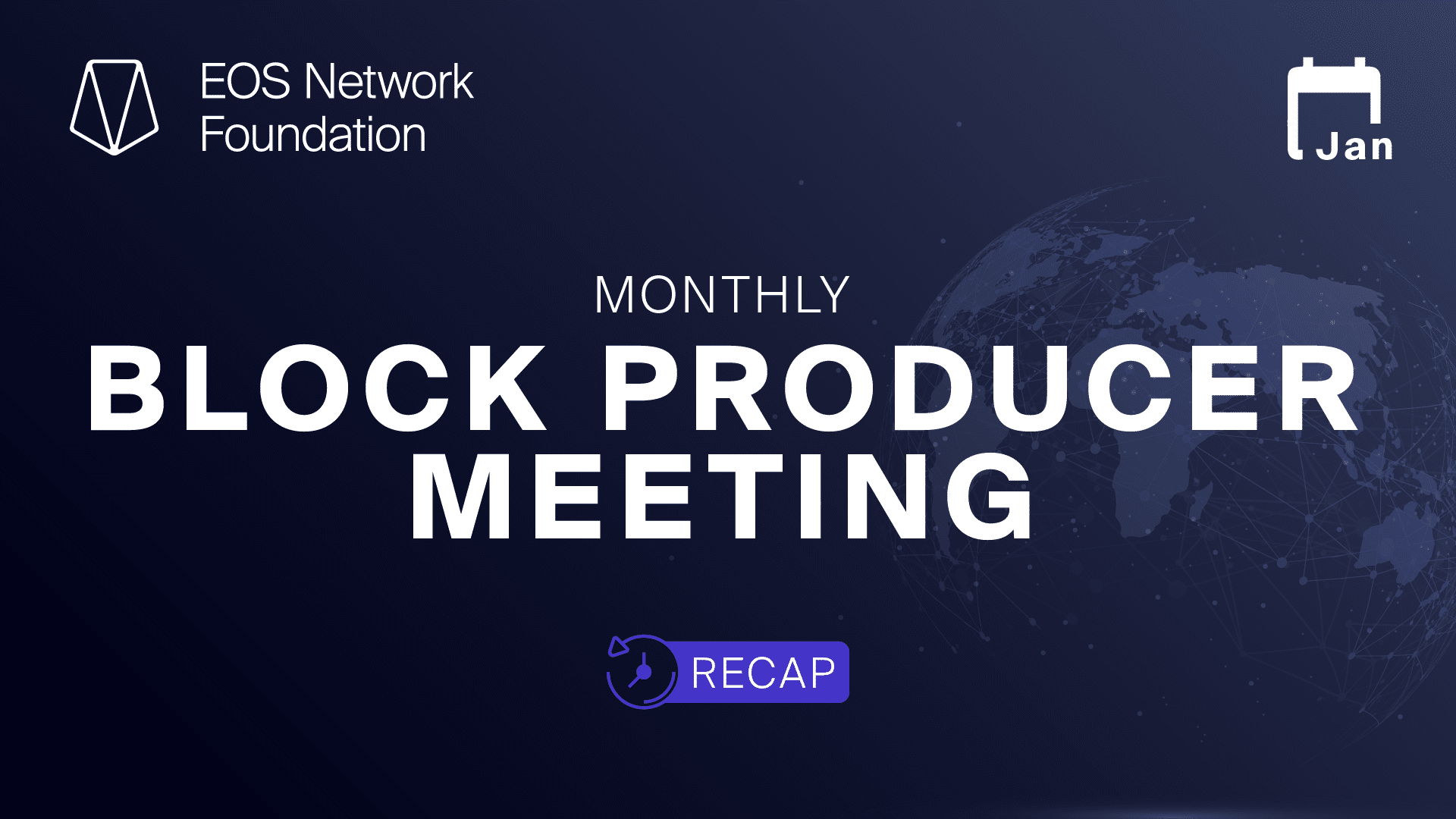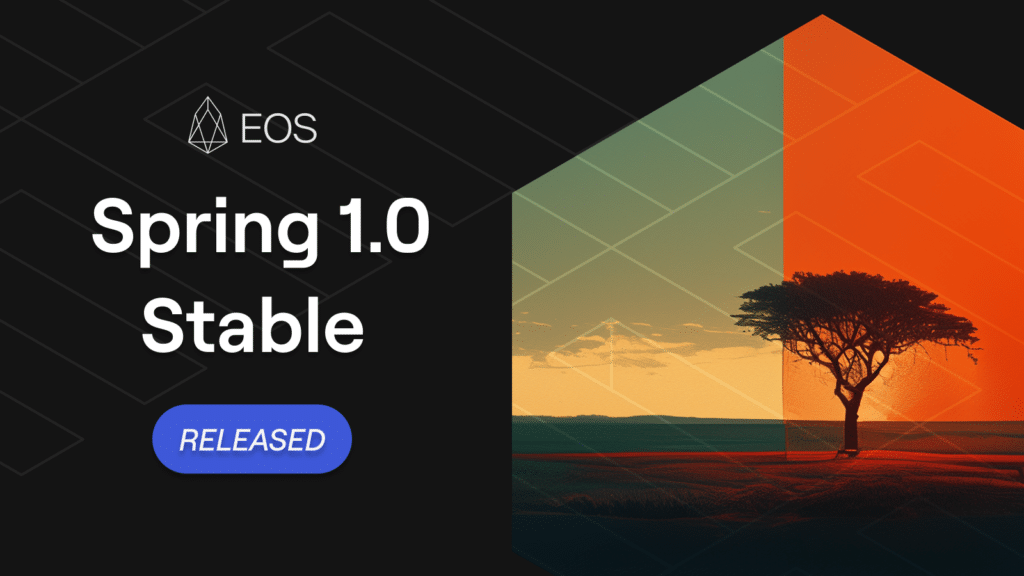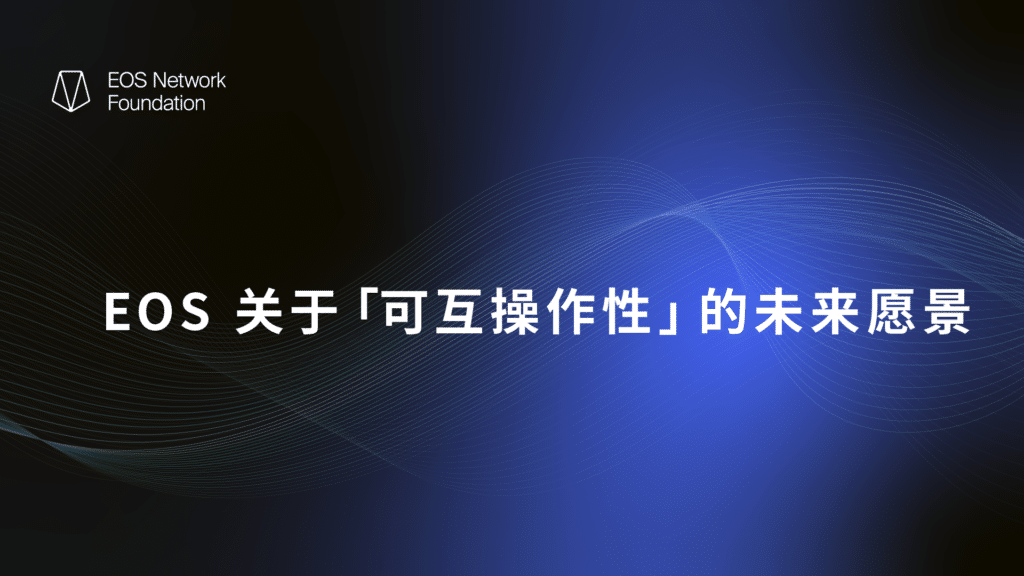Introduction
The monthly EOS Block Producer (BP) meetings are intended to establish regular communications between the top 30 EOS BPs and the EOS Network Foundation (ENF), to foster an open dialogue between network operators and custodians in support of the mutual development of the EOS ecosystem.
Meeting Overview
The meeting began at 0200 UTC on January 10th, 2024. 18 BPs attended the call, and a total of 29 people participated in the discussion. The Interprefy tool was used in the call for synchronous translation to facilitate the free flow of information across multiple languages in real-time.
Beatrice Wang, Communications Manager for the ENF, greeted those in attendance and kicked off the meeting with a brief overview of the topics to be discussed.
Yves La Rose’s Address on EOS Network Enhancements
Yves La Rose, Founder and CEO of the EOS Network Foundation, began the meeting by discussing several important updates and recommendations for Block Producers (BPs) of the EOS network.
Infrastructure Preparedness: La Rose emphasized the need for BPs, especially those close to the top 21, to be well-prepared. This includes ensuring their infrastructure is robust and ready in case they are pushed into the top 21, which is crucial due to the recent surge in transactions on the network. He advised BPs to reach out to others for assistance in configuring nodes and establishing proper peer connections. This preparation is vital for efficient block production and network stability, especially with the increasing transaction volume on the EOS EVM.
LEAP 5.0 Upgrade: The release of LEAP 5.0 was covered, highlighting its significant performance improvements. The latest upgrade boasts up to 5x faster execution of system contracts, including EOS EVM, and up to 4x speed enhancement in atomic API calls with more reliable non-blocking serialization. Additionally, LEAP 5.0 achieves a substantial up to 20% reduction in system memory consumption by the state database. La Rose urged the EOS community, particularly Block Producers, to upgrade to this version to benefit from these efficiency and performance gains, which are crucial for handling the increased transaction volume and maintaining network stability.
Tokenomics and EVM Updates: Finally, La Rose discussed the transfer of EOS EVM tokenomic variables from ENF to EOS Labs. This shift aims to operationalize products more efficiently, with EOS Labs now managing variables like gas fees. He highlighted recent adjustments in gas fees to reflect the actual costs on the chain and mentioned the possibility of future changes to gas fees based on different action types.
EOS Labs Update
Huaqiang Wen, CEO of EOS Labs, provided insights into the current focus and future plans of the organization, particularly regarding inscriptions and RAM usage:
Increased Activity in Inscriptions: Wen noted a significant increase in activities related to inscriptions on the EOS network. He highlighted that the activity has tripled recently, leading to a corresponding increase in the demand and price of RAM.
Impact of Upcoming Inscriptions: EOS Labs anticipates the launch of more inscriptions in the coming weeks. These new additions are expected to further impact RAM usage and overall chain activity. Wen urged network participants to closely monitor real-time data to address any emerging issues promptly.
Improvements in RPC Nodes: Currently, the EOS Network Foundation (ENF) provides an RPC node to support EOS Labs’ activities. However, with the introduction of new projects, particularly those focused on inscriptions, there are plans to move to a specialized RPC node designed to handle these specific demands. This move will ensure stronger and more efficient network connections to support the growing needs of the EOS ecosystem.
Strategic Allocation of Gas Fees for Ecosystem Development: Huaqiang communicated that gas fees collected in eosio.evm will be allocated for purchasing resources like RAM and CPU, token burns, and subsidies for specific projects, including inscriptions. This policy reflects a strategic approach to using gas fees for ecosystem growth and incentivization.
In summary, Wen’s update reflects EOS Labs’ proactive approach in managing the challenges associated with the growing popularity of inscriptions and their impact on network resources. The organization is focused on enhancing infrastructure and collaborating with service providers to ensure the network remains robust and efficient in the face of increased activity.
EOS and Bitcoin Convergence: Envisioning a Layer 2 Integration
Opening Remarks by Tony Tsao
Tony Tsao, a long-standing community member involved with the EOS Network since its genesis, emphasized the monumental impact of the Bitcoin ETF approval. He highlighted this as a pivotal moment for legitimizing the entire cryptocurrency industry and a significant opportunity for mainstream acceptance of Bitcoin. Tony framed this as a strategic turning point for EOS, presenting the idea of EOS as a BTC Layer 2 solution. He stressed the need for the EOS community to rapidly adapt to the evolving market dynamics and leverage this opportunity to revitalize EOS’s position in the cryptocurrency space. Acknowledging EOS’s historical challenges and market position, Tony called for a strategic shift towards integrating EOS with the Bitcoin ecosystem. He invited prominent EOS community members, including Huaqiang Wen, Guillaume Babin-Trembley, and Yves La Rose, to contribute to a forward-thinking discussion about EOS’s future direction and potential as a BTC Layer 2 platform.
Guillaume Babin-Trembley’s Expertise
Guillaume Babin-Trembley of EOS Titan, a prominent figure with a rich background in cryptocurrency and blockchain technologies, including the early development of the Bitcoin Sharp client, brought valuable technical insights to the discussion. He acknowledged the importance of the SEC’s approval of Bitcoin ETFs in the U.S., connecting this event to the potential of EOS as a BTC Layer 2 solution.
In his role, Guillaume has been instrumental in designing and implementing the Antelope IBC (Inter-Blockchain Communication) protocol, a critical development for EOS and the broader Antelope network. Additionally, he is actively collaborating with the EOS Network Foundation (ENF) engineering team on instant finality, an important upcoming upgrade to the consensus mechanism of Antelope and EOS. This work is vital for enhancing the network’s efficiency and reliability, key factors in EOS’s suitability for interoperability with other chains, including Bitcoin.
Guillaume emphasized the unique strengths of EOS and Antelope, such as advanced capabilities and flexibility, which he believes position them well for effective interoperability. Supporting Tony’s vision, he highlighted his dedication to ensuring that key EOS developments, like IBC and instant finality, align with the integration of EOS as a BTC Layer 2 solution. Recognizing the challenges ahead, Guillaume called for collaboration among community members, encouraging those with interest and expertise to contribute to this pioneering initiative, blending his technical leadership with a proactive approach to community engagement.
Yves La Rose’s Pragmatic Viewpoint
Yves La Rose, CEO of the EOS Network Foundation, provided a pragmatic perspective on the potential integration of EOS as a BTC Layer 2 solution. Recognizing the significant possibilities of this endeavor, he also brought attention to its nascent stage, highlighting the current absence of a detailed implementation plan and the complexities surrounding resource allocation and technical execution.
La Rose pointed out the inherent challenges in such a transformative project, particularly underlining the ongoing development efforts towards instant finality – a critical aspect for EOS’s advancement. He emphasized that addressing these challenges effectively requires the engagement of highly skilled professionals and substantial resources, underscoring the need for a dedicated and proficient team capable of navigating the intricacies involved in integrating EOS with Bitcoin’s infrastructure.
Further expanding on the strategy for this integration, La Rose suggested a marketing approach that encompasses a broad spectrum of stakeholders. This strategy involves targeting not just existing EOS community members and Bitcoin holders but also new investors entering the cryptocurrency space, spurred by developments like the Bitcoin ETF approval. He perceived the renewed interest in EOS, fueled by projects such as EOS EVM and inscriptions, as a pivotal opportunity to galvanize support and build momentum for this initiative.
In his address, La Rose conveyed a balanced view that merges the recognition of EOS’s potential in the Bitcoin ecosystem with a clear-eyed assessment of the hurdles that lie ahead. His call for skilled participation and strategic outreach reflected a thoughtful approach to ensuring EOS’s successful navigation in the evolving landscape of cryptocurrency and blockchain technology.
Huaqiang Wen’s Strategic Insights
Huaqiang Wen, CEO of EOS Labs, shared his strategic insights, recognizing the BTC ETF’s passage as a historic opportunity for Bitcoin’s growth and mainstream adoption. He identified the high performance and reliability of EOS as key factors in capturing potential overflow traffic from the Bitcoin network. Wen proposed the creation of a BTC VM (EOS UTXO) on EOS, drawing parallels with the EOS EVM. This virtual environment would use BTC as gas fees and replicate BTC’s address and signature methods, supported by a multi-signature cross-chain bridge. Wen suggested a phased approach for developing this cross-chain bridge, starting with a multi-signature Lock & Mint solution and eventually moving towards a Trustless solution based on Zero-Knowledge proofs, contingent on the BTC main network’s support and technological advancements. He stressed the importance of addressing the absence of a mature Trustless cross-chain bridge in the market and envisioned EOS playing a critical role in this area. Wen’s perspective highlighted the technical feasibility and strategic significance of integrating EOS within the Bitcoin ecosystem, emphasizing EOS’s capability to enhance Bitcoin’s scalability and transaction efficiency.
Each speaker brought a unique perspective, weaving together a comprehensive narrative about EOS’s potential integration as a BTC Layer 2 solution. From Tony Tsao’s strategic foresight and community mobilization call, Guillaume Babin-Trembley’s technical prowess and collaborative approach, Yves La Rose’s pragmatic and resource-focused outlook, to Huaqiang Wen’s insight into technical solutions and market opportunities, the discussions underscored the multifaceted aspects of this initiative. The consensus among these key EOS community members points towards a concerted effort to explore and realize EOS’s potential in enhancing Bitcoin’s ecosystem, marking a significant potential shift in the cryptocurrency landscape.
Pursuing EOS as a BTC Layer 2 Solution
With the EOS community standing at a significant crossroads, the collective insights from Tony Tsao, Guillaume Babin-Trembley, Yves La Rose, and Huaqiang Wen have converged into a compelling call to action. They invited the broader EOS community, especially those with technical expertise and capital resources, to actively participate in the exploration and development of EOS as a BTC Layer 2 solution. Guillaume Babin-Trembley, in particular, emphasized the need for collaborative efforts and encouraged interested individuals to reach out and contribute to this pioneering initiative.
It was underscored that the potential path to integrating EOS as a BTC Layer 2 solution is filled with many unknowns. including technical challenges, resource allocation, and strategic decisions yet to be made. The community is urged to approach the discussion around this proposed endeavor with an understanding that while the potential is immense, the journey is still in its conceptual phase, and nothing is set in stone. This period of exploration and discussion is critical in shaping a feasible, effective, and coherent strategy for EOS’s potential role in enhancing the Bitcoin ecosystem.
Block Producer Attendee List
- Big.ONE
- Cryptolions
- Defibox
- Detroit Ledger Technology
- EOSeoul
- EOS42
- EOSflytoMARS
- EOS SG
- EOSphere
- EOSSupport
- EOS Titan
- EOSUSA
- GenerEOS
- Greymass
- Hashfin
- InfStones
- SlowMist
- StartEOS
EOS Network
The EOS Network is a 3rd generation blockchain platform powered by the EOS VM, a low-latency, highly performant, and extensible WebAssembly engine for deterministic execution of near feeless transactions; purpose-built for enabling optimal Web3 user and developer experiences. EOS is the flagship blockchain and financial center of the Antelope framework, serving as the driving force behind multi-chain collaboration and public goods funding for tools and infrastructure through the EOS Network Foundation (ENF).
EOS EVM
The EOS EVM is an emulation of the Ethereum EVM, housed within an EOS smart contract. It offers feature parity to other EVMs in the space but with unmatched speed, performance and compatibility. EOS EVM connects the EOS ecosystem to the Ethereum ecosystem by allowing developers to deploy a wide array of Solidity-based digital assets and innovative dApps on EOS. Developers can use EOS EVM to take advantage of Ethereum’s battle-tested open source code, tooling, libraries and SDKs, while leveraging the superior performance of EOS.
EOS Network Foundation
The EOS Network Foundation (ENF) was forged through a vision for a prosperous and decentralized future. Through our key stakeholder engagement, community programs, ecosystem funding, and support of an open technology ecosystem, the ENF is transforming Web3. Founded in 2021, the ENF is the hub for EOS Network, a leading open source platform with a suite of stable frameworks, tools, and libraries for blockchain deployments. Together, we are bringing innovations that our community builds and are committed to a stronger future for all.



